The Tanned "Gyaru" Girls Era of Japan and The Lost Decade of Youth Rebellion
My first impressions when arriving here 24 years ago
In November of 2000, more than 24 years ago, I stepped foot in Japan for the first time. I was in a world vastly different from anything I had known for the first 19 years of my life and I would later discover that Japan at the time was a country at a crossroads, grappling with economic uncertainty yet bursting with energy and excitement. Tokyo was a city where anything and everything went down and the young people were WILD.
What prompted me to write this substack post, reflecting on those early days here, was an interview with the Mainichi Shimbun that I did about my single mother documentary, an interview that brought back a flood of memories. The journalist asked me what my first impressions of Japan were and how I thought the country had changed. I can’t help but think of the ganguro girls, the homeless population, the Roppongi nightlife and the safety of Tokyo that greeted me 24 years ago. This substack post is a way for me to try to make logical sense of all the craziness of Tokyo when I first arrived.
“Ganguro Gyaru” Girls
If I am being honest, to me they looked like clowns but these girls are known in popular culture as gyaru, a Japanese transliteration of the English slang word for gal.
The Shibuya area was packed with girls flaunting their unique style, listening to J-pop, and hanging out in front of the iconic 109 building, their mecca. It was a scene of rebellion and self-expression, a stark contrast to the more conservative image many outsiders had of Japan. Walking through Shibuya back then was like stepping into a fashion show mixed with a music video—pure chaos and creativity. The girls were famous for dressing very provocatively and for their flip phones that had 20 or so toys dangling down attached to the phones.
There was also the high school girl version known as the kogyaru, who dressed equally as provocatively. Kogyaru, a contraction of kōkōsei gyaru, meaning "high school gal,” were known for their chapatsu hairstyle (bleached brown coloured hair that was intended to be blonde), shortened skirts and the white loose socks that were a matching set in the late 90’s to early-mid 2000’s in Japan.
This is not a post to make fun of the girls. They were part of the funky culture that made Tokyo so electric and exciting and as a young man, excitement was indeed the word. The girls (and other youth rebels) were a result of the youth rebellion brought about by the "Lost Decade."
The Economic Shadow of the Lost Decade
Japan was still reeling from the burst of its economic bubble when I arrived in 2000, some 10 years after the bubble had burst. It is an era often referred to as the "Lost Decade." Growth had stagnated, deflation was firmly entrenched, and unemployment was at a high by Japanese standards. For so long the Japanese had an abundant amount of real hard cash at their disposal and the decade from 1990 to 2000 was a harsh wake up call to many.
Japan’s economy soared after World War II, hitting its peak in the 1980s with the highest per capita GNP in the world and was the world’s second largest economy (now fourth). Economists and historians largely attribute this miraculous growth to the strong education system and growth-focused economic policies. Japan quickly developed manufacturing expertise that enabled it to produce high-quality goods at remarkably efficient prices, dominating global markets and companies like Sony, Canon, Nikon, Toyota, Mitsubishi, and Honda became some of the most powerful and recognizable names worldwide during this era. Do you remember the line in Back to the Future Part 3?
1955 Doc Brown
(Inspects the failed circuit) "Unbelievable that this little piece of junk could be such a big problem."
(Turns it over) "No wonder this circuit failed, it says made in Japan."Marty McFly
"What do you mean Doc? All the best stuff is made in Japan."1955 Doc Brown
"Unbelievable."
Japan’s export-driven growth fueled a massive trade surplus with the United States and the bubble burst because the United States wanted it to. Fearful of Japan taking over the world economically (as opposed to militarily in 1941), in 1985, the U.S., along with its closest allies, signed the Plaza Accord, with the primary aim of strengthening the Japanese yen thus making Japanese exports less competitive on the global market. For 5 years after, the Japanese economy continued to strive but when the economic bubble burst (signs of it came in the late 80’s), Japanese suicides increased dramatically and the "lost decade" began. I arrived at the end of it.
Youth Rebellion Grows
The Lost Decade had a profound impact on Japan's youth, particularly in shaping the furyo—delinquents who rebelled against societal norms. Japan has had a history of youth rebellion as left wing students joined in with other left wing groups during the ANPO protests of the 1960s, a series of massive demonstrations in Japan opposing the renewal of the U.S.-Japan Security Treaty (ANPO), which allowed U.S. military bases to remain in Japan. Despite the protests, the treaty was renewed with help from the yakuza, who barricaded themselves into the Diet Building so that protestors couldn’t get inside, and Japan signed the agreement that solidified it's strategic alliance with the U.S. during the Cold War.
The economic collapse of the early 1990s left many families struggling to make ends meet. Groups of rebellious youth, often identifiable by their distinctive clothing, hairstyles, and attitudes, could be found all over Tokyo but especially in areas like Ikebukuro, Shibuya and Harajuku. The popularity of subcultures like the gyaru that I mentioned, bosozoku (biker gangs), and even yankii (“yankee”) reflected what I think was the search by young poeople for identity in a rapidly changing Japan. Side note, the word yankee does not mean an American in Japanese, but rather a delinquent school dropout. My first ever pro-wrestling ring name was Yankee Rionne, chosen by my boss (former WWF star) Tajiri who had wanted me to be a loud mouth character.
Looking back at this time now, I feel that many young people of the time were questioning the value of adhering to societal norms, wanting to carve out their own identities in defiance of the rigid structures and expectations of Japanese society, much like myself, the young boy who was seeking his own identity in life by escaping to Tokyo.
My First Impressions
As I wrote above, I arrived at the end of the “lost decade” and when I stepped off the plane at Narita Airport for the first time in my life in November of 2000, I was a skinny 62kg (136lbs) Australian boy with a whole bunch of dreams and nothing else more. I had been raised by a man who would constantly say mean things like “you’ll never amount to anything” and “why can’t you be more like the school captain, who actually achieved something in his life?”
Ironically, the school captain ended up being arrested for property theft just a few years after school graduation and is for all I know now somewhere in Russia far off the grid. Japan was a way out for me and a way to create the person I wanted to become.
The Arrival: A Sea of Black Hair
As soon as I got off the plane and onto the train, I was struck by how different everything felt. A theme of Tokyo that still resonates with me today is the constant movement—from above ground train platforms to underground subway lines, escalators and elevators going up and down, to highways and beyond, everyone is always on the move and in a rush in Tokyo. When you walk amongst the 4 million daily commuters in Shinjuku station you’ll understand what I mean. Add to this the cellphones that people mindlessly stare at as they walk in Tokyo now and you can see why there is a need for constant announcements in train stations these days asking people not to look at their phones as they walk. However, back in November of 2000, the first thing that truly stood out to me immediately was how much shorter everyone was than me. I wish I could say it was because I am over six feet tall but alas no, I am only 5’9 (5’10 with my Tom Cruise boots on) but I could still see above the crowd. Not only could I see a sea of black hair stretching in every direction but I felt I was taller than almost everyone on that first train ride from Narita Airport in Chiba, to Tokyo. It’s funny looking back now because things have changed; the Japanese are taller and bigger thanks to the American diet the country has adopted.
As I was walking through Tokyo in my early days, none of the “lost decade” stuff was noticeable to the human eye. The struggles of everyday people were hidden then and are hidden even to this day. The economic downturn was not visible except for one of the most jarring sights for me, the number of homeless people in Tokyo. Blue tarpaulin tents lined parks and riverbanks, especially in areas like Shibuya, Shinjuku and Ueno.
This was something I hadn’t expected to see in an affluent country known for its order and precision. When Tokyo was given the green light to host the 2020 Olympics, the homeless people were promptly swept up and moved out of sight and the number of homeless people in plain sight are now much fewer than in previous years.
The streets of Tokyo were also marked by the presence of certain unsavory characters as Iranian and Nigerian criminals roamed alongside chinpira (low-level yakuza). You could often spot these groups in areas like Roppongi or Kabukicho, selling drugs and fake goods or hustling tourists to go to the bars they worked in. I’ll never forget the day the police cracked down on the Iranian groups who were selling drugs and fake phone cards. It was a sweeping operation and after that they seemed to vanish overnight. It was a dramatic change to the Tokyo landscape.
Roppongi: The Devil’s Playground aka Sin City
Then there was Roppongi, famously nicknamed "Sin City" and known for its wild (to put it mildly) nightlife. It was a magnet for gaijin (non Japanese) expats and tourists, and for local women looking to let loose in more ways than one. The area was alive with bright lights, pulsing music, and an eclectic mix of people. Two of the most iconic spots were Gas Panic Club 99 and Lexington Queen. Both were sleazy joints and Lex was the nightclub that had underage international high school girls sneak in with other young girls, offering everyone all you can drink alcohol all night for 3000 yen, about $20. It was a cheap night out that always ended with a bunch of new email addresses in my flip phone, often received via sekigaisen (infrared) information exchange. You could get the other person’s phone number and email address instantly via infrared signal, long before the days of any messaging apps. Gas Panic, the most sinful of all nightclubs where young women danced freely on the tables, epitomized the anything-goes vibe of Roppongi. It wasn’t just a club; it was an institution, where drinks flowed freely, and the dance floor was packed until the early hours. Nigerians who worked there forced all patrons to immediately buy another drink the moment they finished drinking.
And the sign board enlarged:
The energy was infectious, but Roppongi also had its darker side, with crime and excess often lurking just beneath the surface. It was a place where you could lose track of time—and perhaps a bit of yourself—amid the chaos. The police did their best to kill Roppongi off by implementing a new NO DANCING law around 2007. I remember them coming into night clubs and hounding people who were dancing, and I remember club staff at the various clubs telling us all to stop dancing even before the police came in. It worked and Roppongi is now a shadow of it’s former self.
A Remarkable Sense of Safety
Despite it’s dark side, one of the most striking aspects of Tokyo was actually how incredibly safe it felt overall. Even in crowded areas like Roppongi, Shinjuku or Shibuya late at night, I never felt threatened, apart from the odd bust up with a Nigerian hustler here and there. Crime rates were, and still are, extremely low, although this is changing. Check my article on Japan’s dark side jobs.
There was an unspoken sense of trust and order that permeated daily life. It wasn’t uncommon to see young children traveling alone on trains or people leaving their belongings unattended in cafes.
The Sardine-Like Rush Hour Trains
Another unforgettable experience was riding the trains during rush hour, something I avoid at all costs now. Being packed into a Tokyo train felt like being a sardine in a tightly sealed can. Station staff—known as "pushers"—would literally shove people into the cars to ensure the doors could close. It was claustrophobic, surreal, and strangely efficient. The trains ran like clockwork and while the experience was overwhelming, it was also a testament to how Japan’s infrastructure managed to move millions of people daily.
A Changing Society
The Tokyo I encountered then was also beginning to wrestle with societal shifts. The aging population was becoming more noticeable, and terms like hikikomori (social withdrawal, people never leaving their homes) and freeter (unemployed youth) hinted at a growing sense of alienation among the younger generation. Women were pushing back against traditional roles, seeking more opportunities in education and the workforce.
Tokyo was—and still is—a city of constant movement and reinvention. Back then, the escalators, subways, and streets felt like arteries pumping life into my veins and Japan was a country trying to find its footing. Japan has evolved so much since then, but those early days left an indelible mark on me. From the gyaru culture of Shibuya to the economic challenges now visible (but not back then) on every street corner, it was a country in flux and I’m grateful to have witnessed a slice of it firsthand.

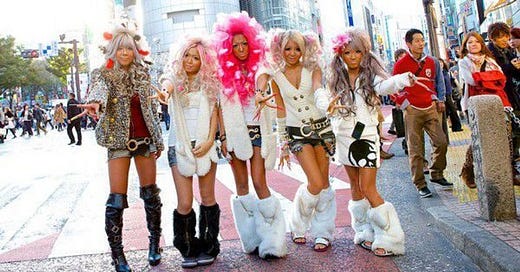




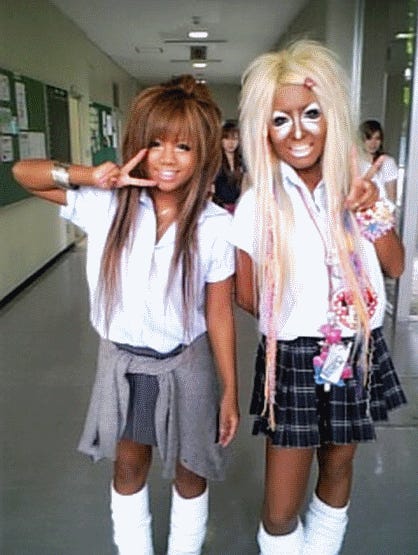

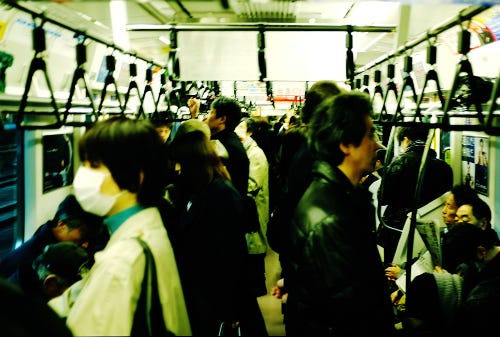
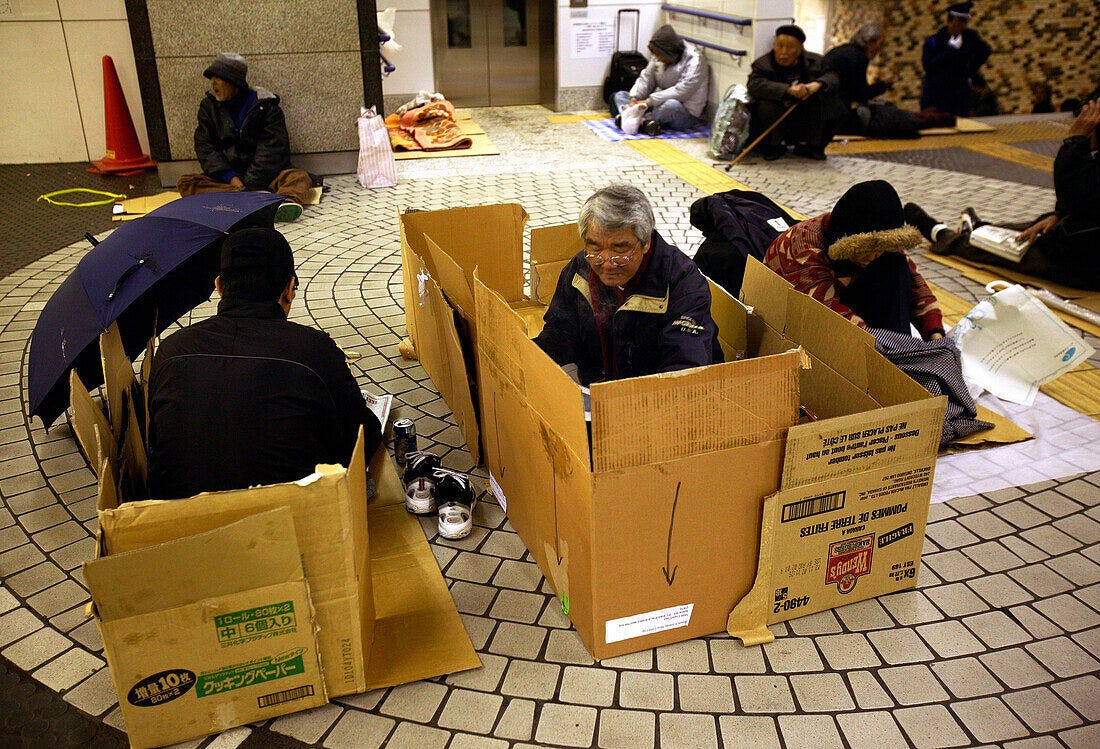
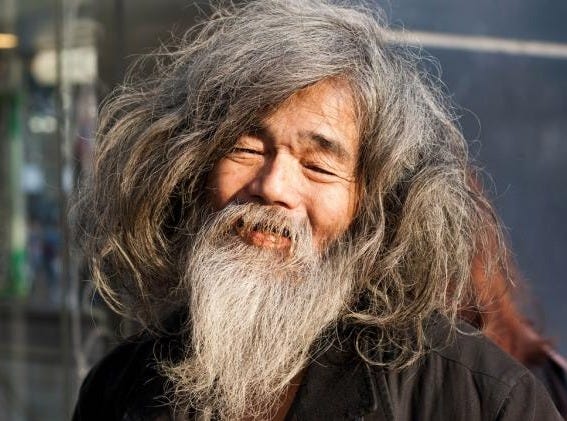
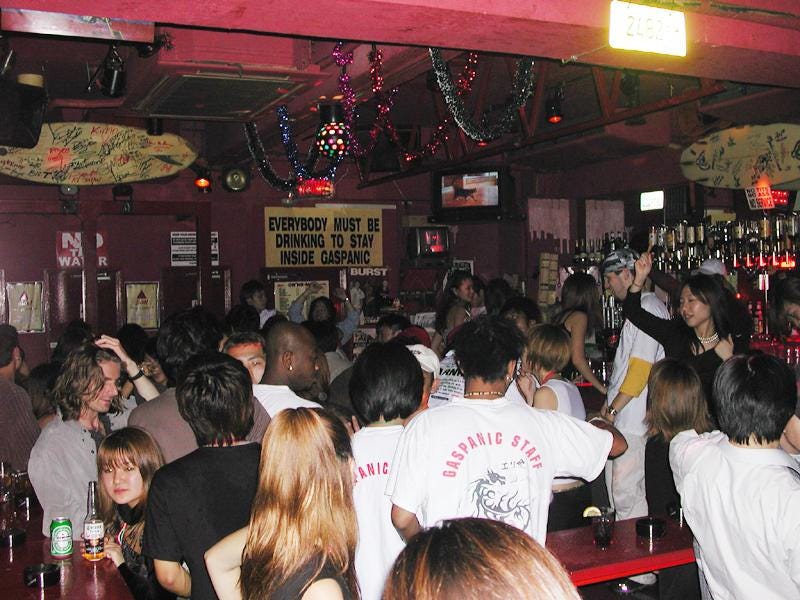
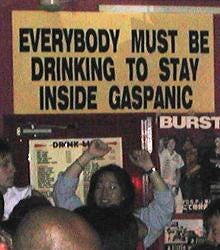

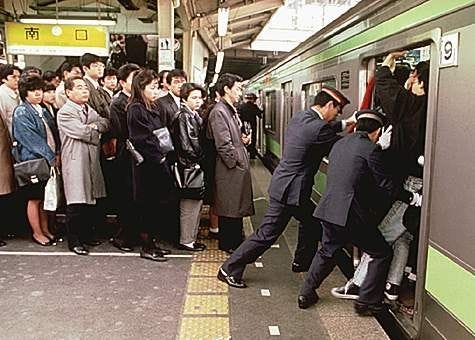
Interesting how things changed, and didn't, from my first impressions when I arrived a decade or so before you in 1991 just as the bubble was bursting. No keitai and no homeless but otherwise not much different, though fewer convenience stores I expect and a lot fewer places taking plastic (as in major hotels and that was more or less it). The lack of keitai made a huge difference in terms of how you planned life, met friends and so on, but that's true of the rest of the world too. Roppongi was equally seedy, though I forget the names of the places I used to refrequent, and there were very few Africans, all the sleaze was done by Japanese, Iranians or people from SE Asia. The big issue I recall was making absolutely sure I did not miss the last train home because the taxi fare was always extortionate at 3am..... a couple of times we definitely avoided that by going to Dennys (I think? or was that in Shinjuku?) for a couple of hours before getting the first train
BTW It seems to me that the homeless started disappearing well before the olympics. As in 2012 ish. I mean sure there were still a few but the numbers all across Japan started dropping in the 2010s
Great little snapshot into a time gone by, would love to have experienced it.